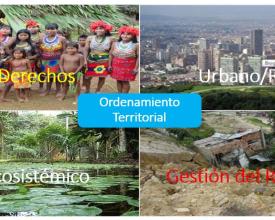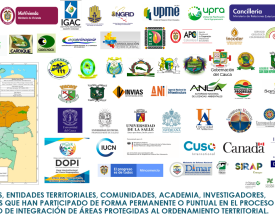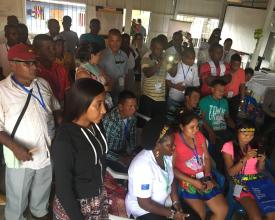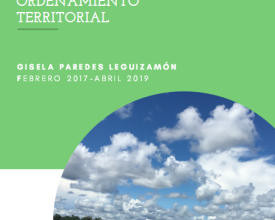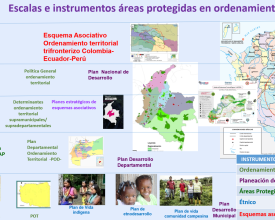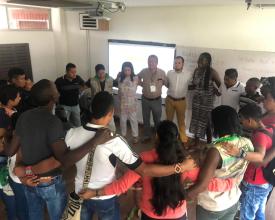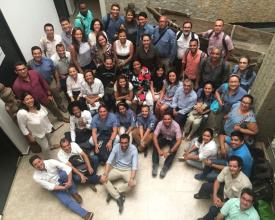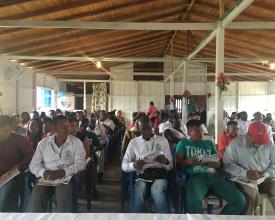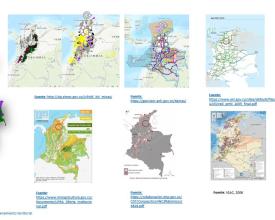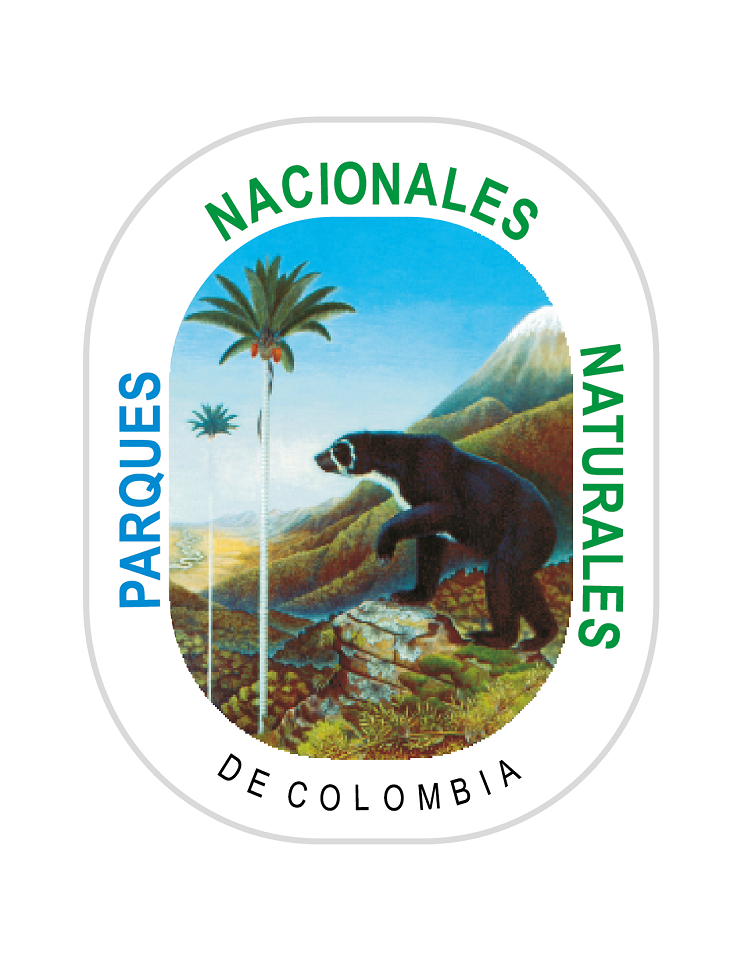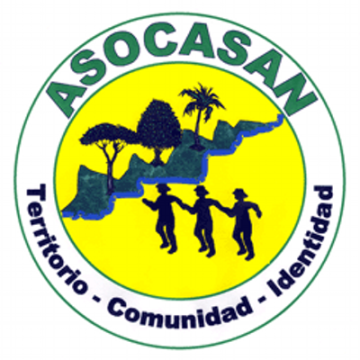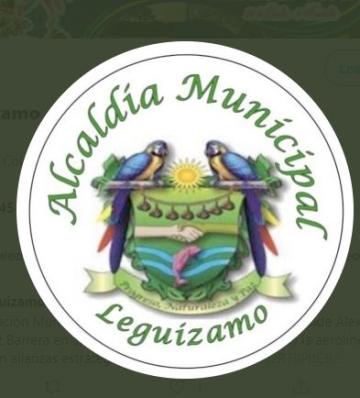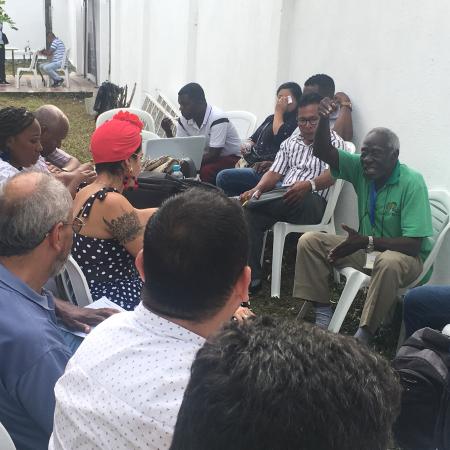
Integration of protected areas into public policies, instruments and land use planning: strategy for governance, conflict management, development and reconciliation with nature
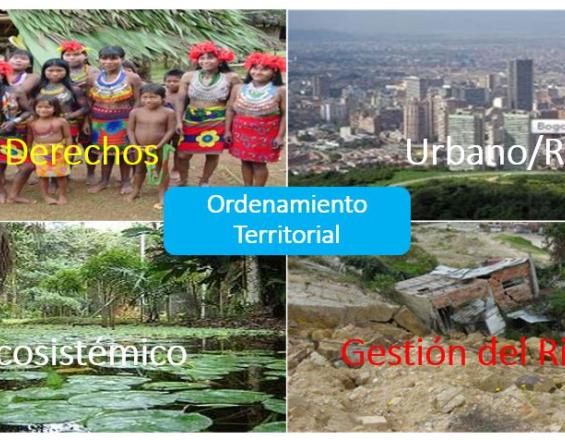
What strategy to use so that protected areas planning is articulated and influences public policy makers of state and sectoral development? In 2011 I began research/systematic action that has sought the complementary and synergistic integration of protected areas in land use planning instruments, as a strategy for the management of socio-ecological conflicts and contribution to human welfare. As a result of the political, technical and training strategy developed continuously since 2012, we have achieved the integration of protected areas in the General Land Management Policy, the multi-scale participation of Park Rangers, communities, environmental authorities in processes of land management plan formulation, inter-institutional instances and capacity building land management design guide, exchange of experiences with Argentina and participation in the IUCN project Zambia, Tanzania, Vietnam, Colombia.
Contexte
Défis à relever
To evolve from the fragmented paradigms of territorial reality (urbanistic, ecological, socio-cultural, economistic), this has generated parcels of knowledge and a dispersion of management, which has achieved neither the conservation of nature nor the wellbeing of communities. Advancing in transdisciplinary knowledge, the dialogue of knowledge, and the integral vision of the territory cannot be postponed, as well as recognizing ourselves as beings of nature. Understanding that landscape is not the same as territory, in biodiversity management or in urban development processes is fundamental, this will allow us to advance towards multi-scale territorial management from a rights-based approach (nature, environmental collectives, dignified life). To influence public policies so that biodiversity conservation and natural diversity are understood as pillars of territorial development, their conservation is financed with contributions from different sectors, and capacity building is contributed.
Emplacement
Traiter
Résumé du processus
The initiative to integrate protected areas into land-use planning responds to the need to:
1. Advance in the harmonization of planning instruments that are applied in the same territory (environmental, ethnic, land use planning and sectoral).
2. Contribute to conflict prevention and management
3. It is a multi-scale, multi-actor approach that recognizes ethnic planning instruments and the different levels of biodiversity. Contributes to the management of multilevel public policies.
Blocs de construction
Synergy and complementarity between approaches for effective territorial management of biodiversity
In order to address the challenges faced by society in social, economic, environmental and cultural terms, commitments have been adopted at the global level and subscribed to by States in different agendas, each with particular intervention approaches (rights, ecosystemic, urban-regional, disaster prevention and risk management and/or climate change). which of these approaches is appropriate for effective territorial management of biodiversity and social inclusion? All. The reality of the territories is diverse, complex and has very specific problems and potentials, which require cooperative, concurrent, complementary and multi-scale work of social and institutional actors to harmonize and implement the actions proposed in the planning instruments, in such a way that they respond to the identified needs, in order to prevent and manage socio-environmental conflicts, advance in the conservation of nature and human wellbeing.Combining rights, ecosystemic, urban-rural, risk management and climate change approaches is necessary to manage territories in an integral and pertinent manner.
Facteurs favorables
Ratification, compliance with commitments Sendai Framework, Convention on Biological Diversity, Climate Change Convention, New Urban Agenda, ILO Convention 169. Sound Institutionality and Systems of: Disaster Prevention and Attention and Risk Management, National Environmental, Protected Areas, Climate Change, Cities. Knowledgeable and experienced personnel. Existence of Special Inter-Institutional Committee of Colombia's Land Management Commission since 2012. There are agreements between National Parks, environmental authorities, ethnic communities and sectors.
Leçon apprise
Colombia is a multi-territory, where different concepts of territory coexist: national state (unitary republic, decentralized in territorial entities, where it exercises sovereignty); indigenous ethnic (there are 115 ethnic groups, each one amalgamates ancestry, origin, cosmovision, relationship with mother earth); ethnic black, Afro-Colombian, Palenquero and Raizal communities where ancestors, nature, the river, the sea determine solidarity behavior; border territory where ecosystems and culture transcend the political administrative boundaries of nations. Territorial governance requires dialogue between governance (protected areas, water, natural resources and food), towards legitimacy, synergy between processes, governance, public policy relevance, participation, dialogue of knowledge and good living. Environmental, ethnic, peasant, urban and rural planning should dialogue to achieve viable territories. Co-leadership, alliances, cooperative work between environmental authorities, researchers, academia, territorial entities, community leaders, institutional sectors.
Biodiversity in land use planning instruments
in order to be feasible, planning of protected areas and socio-ecosystems must have an impact on land use planning instruments.
Facteurs favorables
The inclusion of land use planning in nature conservation management, risk management and public health has already been mentioned.
Leçon apprise
They are not synonyms: 1) ecosystem planning with land use planning, 2) ecosystem is not equal to territory.
All land use planning should be environmental.
In order to integrate protected areas into land use planning, it is necessary to have an integral vision and analysis of the territory, therefore they must be identified and contribute to the management of ecosystem articulation, CBD programs, UNESCO and of course the aspirations, visions and own forms of conception and regulation of the territories of the ethnic and local communities.
Impacts
Advocacy in public policies and participation in inter-institutional bodies: inclusion of protected areas in Colombia's General Land Management Policy, Departmental Guidelines; coordination of the Technical Secretariat of the Land Management Commission 2017-2019; member of the Special Inter-Institutional Committee of the Land Management Commission since 2012 coordinated by DNP and of the Committee for Integrated Management of the Coastal Marine Territory led by the Colombian Ocean Commission. Structuring of eight pilot cases: generation of lessons learned, recommendations and methodologies for integrating protected areas into public policies, with support from more than 30 institutions. Capacity building of social and institutional actors, sectors, exchange of experiences with Argentina, Uruguay. In 2021 Diploma in Colombian Orinoco cooperation Llanos, Santo Tomas and National Parks Universities. Together with Instituto de Investigaciones Ambientales del Pacífico, development of Interinstitutional Permanent Offer Dialogues and diploma courses in the Biogeographic Chocó. International alliances: with IUCN development of the project "Integrated Land Use Planning for the implementation of the strategic plan of the Convention on Biological Diversity and increase the resilience of ecosystems to climate change" in Vietnam, Tanzania, Zambia and Colombia in the period 2014-2018.
Bénéficiaires
Local communities
Ethnic communities
Civil society
Academia
Local, sub-national, national governments
Cross-border public policy makers
Cooperating partners
Productive sectors
Objectifs de développement durable
Histoire

In a biodiverse, multiethnic, multicultural, marine-coastal and regional country, with a tradition of more than 60 years in nature conservation, for a decade, some Park Rangers, academics, leaders of black, native and peasant communities, researchers, academics, civil society, state institutions and donors, took the risk of trusting, believing, contributing and dreaming of an inclusive territory, in peace, where life in all its forms is possible. They embarked on a journey of joint learning, to understand how nature, territories, and productive sectors could generate spaces for dialogue and active and multi-scale participation in the formulation of contextualized public policies on land use planning. We have traveled through fantastic landscapes, met flesh and blood heroes who fight for their communities and the protection of nature, civil servants who have put their shirt on for the territories,..., victims of the armed conflict, environmental defenders who forgive and cry for reconciliation,..., rigorous academics who listen and learn,..., park rangers with an unwavering mystique. All united in diversity and committed to a better world for everyone. Dedicated with respect, admiration and gratitude to those who were, to those who are and to those who will come.

